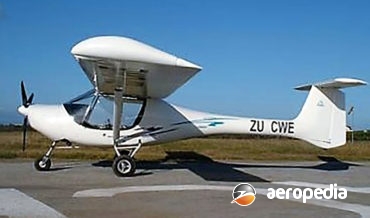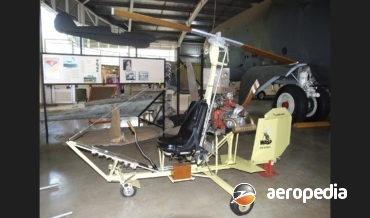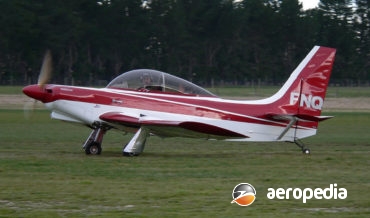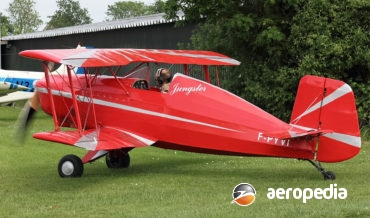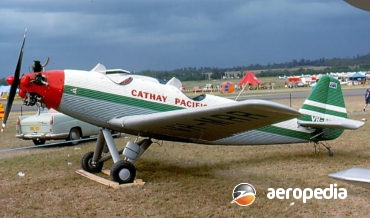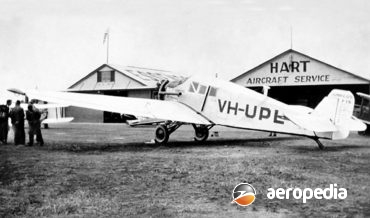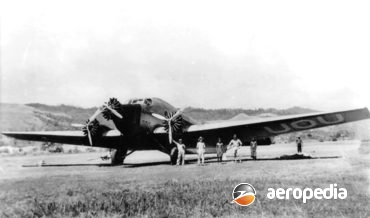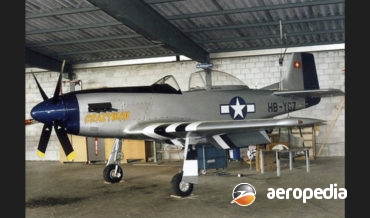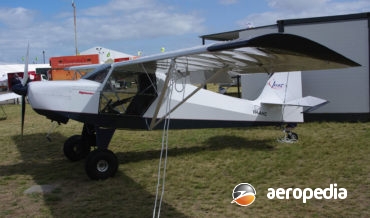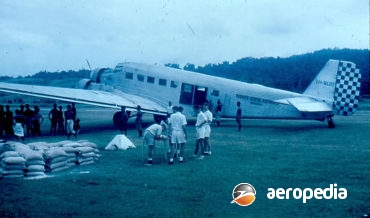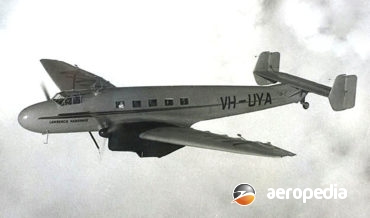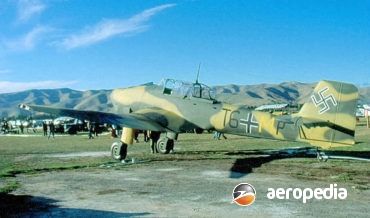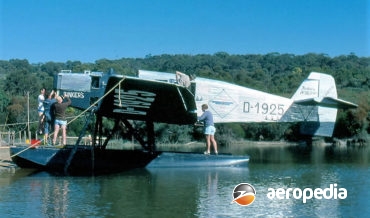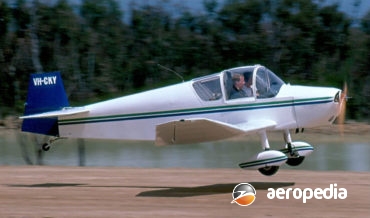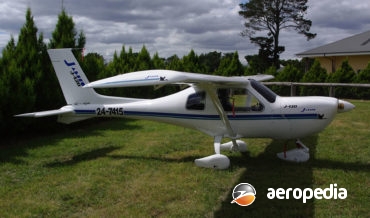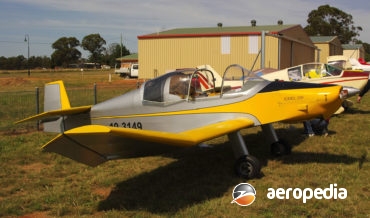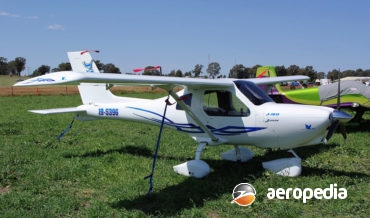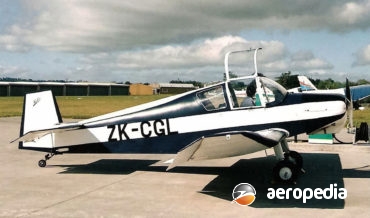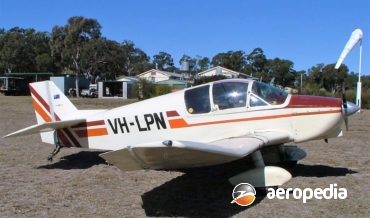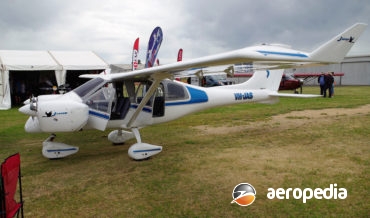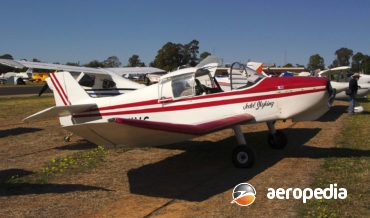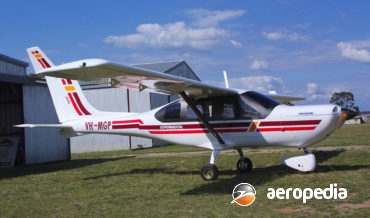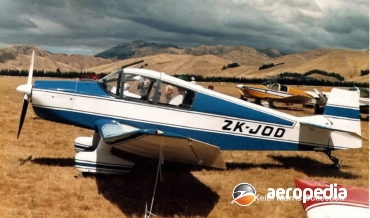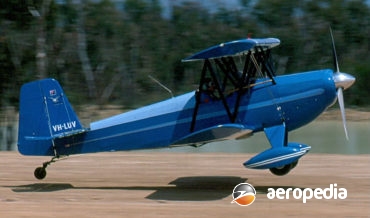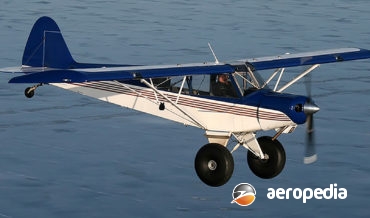All Contents
Contents
Early in the 20th century Mr A W Jones went to England and obtained his pilot’s licence. On his return in 1913 he imported a Caudron G.II fitted with a 26-kw (35-hp) to 30-kw (40-hp) Anzani engine.
David C. Eyre
- May 25, 2020
This was an ultra-light aircraft which was registered with the RAA as 10-1477 and was registered from 22 September 1995 until 16 January 1999 when it was retired.
David C. Eyre
- May 25, 2020
Little is known about this ultralight aircraft but one is known to have been involved in an accident near Yeppoon Qld on 6 April 1985.
David C. Eyre
- May 25, 2020
The Joey was probably one of the first powered gliders in Australasia, and was designed and built in Australia by Keith Jarvis of South Australia and placed in production.
David C. Eyre
- May 25, 2020
Peter Jones of Tauranga, NZ in 2011 – 12 built a single-seat low-wing monoplane said to be based on a 1950s design from India known as the Monsoon.
David C. Eyre
- May 25, 2020
Mr Jones was the lecturer in charge at the East Sydney Technical College when classes were held in the 1930s in relation to aircraft design and construction and he himself was involved in the design and construction of a number of aircraft of his own design, and with the assistance
David C. Eyre
- May 25, 2020
The Jora was a light aircraft produced in the Czech Republic produced by Jora SRO in Vraclav. Looking very similar to the Fantasy Air Cora, which made its public debut at the Fredrichshafen Air Show in Germany in May 1997, it becamepopular due to its low cost and good performance.
David C. Eyre
- May 8, 2019
The W.34 series was developed concurrently with the W.33 by Junkers using virtually an identical basic design, and both were refinements of the F.13 and built as general purpose transports.
David C. Eyre
- May 8, 2019
The McCandless M-4 Gyroplane was a British single-seater ultra-light autogyro first flown in 1961 and was initially powered by a Triumph motor-cycle engine, this later being replaced by a Norton motor-cycle engine but this was also found not to be suitable for installation in such a machine and was abandoned
David C. Eyre
- May 8, 2019
On 27 June 1956 the prototype of a single-seat light monoplane, designed by M Marcel Jurca for amateur construction, was flown in France.
David C. Eyre
- May 8, 2019
Designed by Rimn Isaminskas in Los Angeles, an aeronautical engineer, the Jungster series of light aircraft were simple, strong aircraft, the Jungster I being an aerobatic biplane. The design was based on the German wartime aerobatic training biplane, the Bucker Jungmeister. Designed in 1962 and built to 80% scale, the
David C. Eyre
- May 8, 2019
The Gnatsum (Mustang spelt backwards) is a 2/3rdscale replica of the North American P-51 Mustang
David C. Eyre
- May 8, 2019
The prototype of the Junkers A-50 tandem two-seat, all-metal, light monoplane was flown for the first time in 1928.
David C. Eyre
- May 8, 2019
The Jurca MJ-8 and MJ-80 are amateur-built scale replicas of the World War II Focke Wulf Fw-190 fighter aircraft, the former being to 75% scale and the latter full scale.
David C. Eyre
- May 8, 2019
The F.13 was a development of a series of light transports designed by Professor Hugo Junkers, they all being all-metal monoplanes with corrugated skinning to provide strength.
David C. Eyre
- May 8, 2019
The MJ-10 is a 75% scale replica of the Supermarine Spitfire designed by the late Marcel Jurca in France and is made available in plan form for construction by amateur builders.
David C. Eyre
- May 8, 2019
The Junkers G.31 series of commercial transports was one of the success stories of the 1930s, and its operation in New Guinea in the freight role has gone down as one of the important annals in aviation history.
David C. Eyre
- May 8, 2019
The Gnatsum series of aircraft was designed and built in France by Marcel Jurca and the name Gnatsum is Mustang reversed.
David C. Eyre
- May 8, 2019
It seems there were two Junkers J.1 aircraft, the first, the Blechesel,known as the‘Tin Donkey” or “Sheet Metal Donkey” being the world’s first practical all-metal monoplane and appeared at the beginning of World War
David C. Eyre
- May 8, 2019
The Escapade and Highlander are produced by Just Aircraft as light sporting aircraft in kit-plane form at the company’s premises at Walhalla in South Carolina.
David C. Eyre
- May 8, 2019
The workhorse of the German Luftwaffe in the transport role during World War II, the prototype Ju-52/ba (D-1974)
David C. Eyre
- May 8, 2019
The Just Aircraft SuperStol is a development of the company’s Highlander developed for the amateur-built market and it was designed and marketed by Just Aircraft of Walhalla
David C. Eyre
- May 8, 2019
In the 1930s the German aviation industry was attempting to develop a new aeronautical prestige on an international basis
David C. Eyre
- May 8, 2019
Designed and built by Junkers Flugzeug Und Motorenwerke A-G, the Ju 87, known as the Stuka was perhaps the most famous dive-bomber of World War II.
David C. Eyre
- May 8, 2019
The JS-3 Rapture is one of a series of high performance gliders built in South Africa by Jonker Sailplanes the first model being the JS-1, the prototype of which flew for the first time on 12 December 2006 and the company immediately became known as a builder of world-class sailplanes.
David C. Eyre
- May 8, 2019
The W-33 was developed by Junkers concurrently with the W-34 series, both being virtually identical, and in the ultimate a development of the F-13.
David C. Eyre
- May 8, 2019
Designed as a two-seat development of the Jodel D-9, the D-11 became the basic model in a series of Jodel two-seat, light aircraft designs for amateur and commercial production.
David C. Eyre
- May 8, 2019
The Jabiru J-120 is one of a range of light aircraft designed in Australia and built by Jabiru at its facility at Bundaberg in Queensland for the recreational aviation market in Australia.
David C. Eyre
- May 8, 2019
The D-18 Sovereign was derived from the Jodel D-11 series but it is smaller and lighter all round so that it may be fitted with smaller engines, ie in the 41-kw (55-hp) to 60-kw (80-hp) class.
David C. Eyre
- May 8, 2019
The J160 was designed to meet JAR-VLA European airworthiness standards by Jabiru Aircraft Pty Ltd of Bundaberg, QLD.
David C. Eyre
- May 8, 2019
The D-112 Club series was developed from the D-11 Club series, embodying some major design refinement, in the late 1960s, being the most popular of the Jodel series of light touring and sporting monoplanes in France
David C. Eyre
- May 8, 2019
The Jabiru J230 series is the culmination of the series fitted with a six-cylinder Jabiru engine and aimed at the registered general aviation market.
David C. Eyre
- May 8, 2019
Photograph: Jodel D-150 Sky Prince VH-LPN (c/n N189) at Wedderburn, NSW in August 2005 (David C Eyre) Country of origin: France Description: Two-seat light sport monoplane Power Plant: One 78 kw (105 hp) Potez 4 E20 four-cylinder in-line air-cooled engine Specifications: Wingspan: 8.15 m (26 ft 9 in) Length: 6.3
David C. Eyre
- May 8, 2019
In about 2012 Jabiru Aircraft of Bundaberg, QLD was looked at extending its range of aircraft and looked at building a helicopter and a twin-engine variant of the Jabiru light sporting aircraft.
David C. Eyre
- May 8, 2019
Photograph: Jodel DR-1050M Sky King VH-KVC (c/n V67) at Narromine, NSW in September 2012 (David C Eyre) Country of origin: France Description: Three-seat light touring monoplane Power Plant: One 75 kw (100 hp) Continental O-200A four-cylinder horizontally-opposed air-cooled engine Specifications: Wingspan: 8.72 m (28 ft 7½ in) Length: 6.35 m
David C. Eyre
- May 8, 2019
One of a range of light aircraft produced by Jabiru at its facility at Bundaberg, QLD, the J-430 series is larger than previous models and was designed to seat either two or four and operate as a touring aircraft for the buyer.
David C. Eyre
- May 8, 2019
Photograph: Jodel DR-1051 Sicile Record ZK-JOD (c/n 350) in June 1988 (Keith Morris –NZCIVAIR) Country of origin: France Description: Two-seat light sport monoplane Power Plant: One 78 kw (105 hp) Potez 4 E-20A four-cylinder air-cooled engine Specifications: Wingspan: 8.72 m (28 ft 7½ in) Length: 6.5 m (20 ft 10
David C. Eyre
- May 8, 2019
The Wichawk is a sporting biplane designed by the Javelin Aircraft Co of Wichita, Kansas, for the amateur builder.
David C. Eyre
- May 8, 2019
Photograph: Replica of the Johnson Brothers Monoplane at Caboolture, QLD after assembly in 2021 (Eleonore Eyre) Country of origin: United States of America Description: Single-seat monoplane Power Plant: One 48 kw (65 hp) Johnson four-cylinder two-cycle VEE engine Specifications: Wingspan: 10.97 m (36 ft) Length: 10.36 m (34 ft) Weight:
David C. Eyre
- May 8, 2019
The Super Cub is provided in kit form by Javron Aviation, a division of Javron Precision Machining of Brainerd, Minnesota.
David C. Eyre
- May 8, 2019
Recent Comments
Archives
Categories
- No categories
Categories
- No categories
Latest Posts
Newsletter




